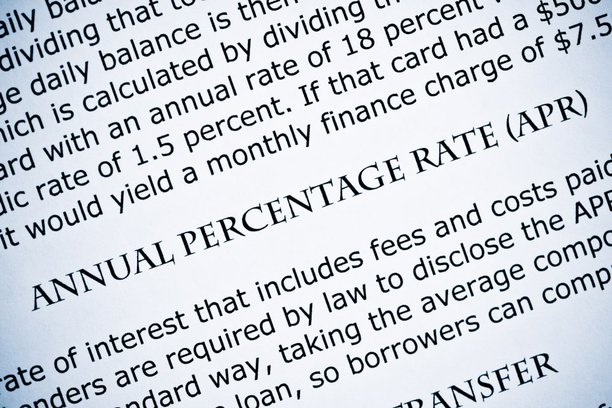What is an APR and how does it work?
If you have ever applied for a loan, you are probably familiar with the term Annual Percentage Rate (APR). This number is expressed as a percentage of the total loan principal, and is the total interest charge that a loan incurs on an annualized basis. Compound interest is, however, not taken into account when discussing APR. The APR can be used to compare between different loans or credit products as it offers a standardized view of the total cost that a borrower can expect to pay over a given year.

How does APR work?
Remember that when you borrow any sum of money, interest is the total cost paid for the privilege of borrowing the principal amount. Lenders can charge this interest on a weekly, biweekly, monthly, quarterly, etc. basis. Regardless of how the rate is quoted though, the APR offers a view of the total annual interest amount to be paid. Assuming that all other variables are held equal, a loan with a lower APR is considered to be more favourable to a loan with a higher APR.
When a credit card user has an outstanding balance on their credit card, the card issuer will use APR to calculate how much interest will be charged on the outstanding amount. Most issuers will charge interest on the daily balance that is outstanding at the end of each day over and above the payment period (which is usually 30 days).
For example, imagine a borrower that has a $5,000 balance on his credit card account at the end of the month. This borrower owns a credit card that charges an APR of 20%. The credit card issuer will then divide this APR by 365 days (or 360 days in some cases) to find the daily interest charge.
This is done as follows:
20%/365 x $5000 = 0.0005479% x $5000 = $2.74
This means that for each day that the borrower does not pay back the outstanding balance, a charge of $2.74 is incurred. If the borrower left the outstanding balance unpaid for a whole year, he would have to repay $1,000 just in interest costs on top of the principal amount of $5,000 at the end of the year.
Fixed vs. Variable APR
When a lending institution extends a loan to a borrower, they may offer either a fixed or variable APR. This is particularly true in the case of mortgages. A fixed APR does not change through the life of the loan. That doesn’t mean that the fixed APR cannot be altered. However, if a lender is seeking to increase the fixed APR, they have to notify borrowers in advance.
On the other hand, a variable APR may change based upon a macroeconomic indicator such as the prime rate. When evaluating a prospective loan, borrowers are advised to understand whether they are entering into a fixed APR or variable APR. In the case of a variable APR, payment profiles and amounts per month can look very different a few years or even months down the line than with the relative stability of a fixed APR.
Types of APR
When using a credit card, you may have multiple types of APRs that are applied to different types of debt depending on the way you use your card. Some of the most common types are as follows:
APR Type |
Description |
Notes |
Purchase |
The rate applied on purchases made on the credit card |
Any purchase made at a physical store or on an e-commerce site will incur interest at the defined purchase APR if not repaid on time. |
Introductory |
A promotional rate offered to new customers |
To attract customers towards their card, card issuers may offer a lower promotional rate initially before the rate rises back to the purchase APR. |
Cash Advance |
Rate applied when cash is borrowed from credit card availability |
A credit card cash advance offers cash from an ATM based on total unused availability on the credit card. However, this normally comes with a higher APR than the purchase APR. |
Penalty |
Rate increases due to delayed payments or non-payment |
Penalty APRs are generally the highest APRs levied when payments are not made on time or not made at all. |
Nominal vs. Effective APR
There are two forms of APRs that borrowers need to keep in mind when assessing the terms of a new credit product. The nominal APR represents only the cost of borrowing money i.e. the interest rate presented on an annualized basis. However, the effective APR includes the additional fees that are added on an incremental basis to the interest rate.
The best way to illustrate the difference is by using the example of a credit card. The number quoted by the credit card issuer is normally the nominal APR which represents the amount that a borrower has to pay in interest on outstanding balances. However, if the credit card issuer charges fees for something like cash advances at the ATM, then the effective APR captures these additional charges as well.
Final Remarks
Regardless of whether the quoted rate on a loan product is daily, weekly, monthly, or quarterly, the APR offers a standardized view of what you will pay in interest costs for borrowing a certain principal of funds on an annual basis. This makes it a good comparison tool to benchmark different rates, regardless of how they are quoted.
When selecting a rate, ensure that you are cognizant of whether it is a fixed or variable APR.
When applying for a credit card, it is advisable to find out the different types of APR that will be charged, and if a separate rate kicks in after a particular point of time. This will prevent surprises later down the road.





